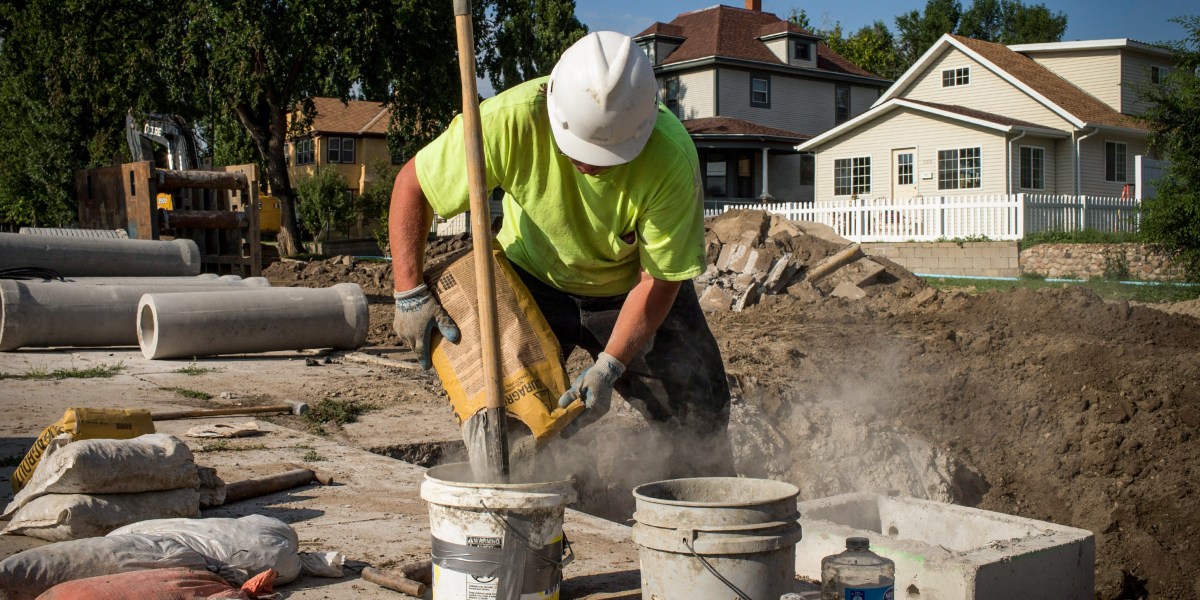The hidden climate cost of everything around us
This article is from The Spark, MIT Technology Review’s weekly climate newsletter. To receive it in your inbox every Wednesday, sign up here.
The world is building and making things as never before, from roads and hospitals to vehicles and furniture. That’s good news for people who benefit from new goods and infrastructure, but it’s also made industries like manufacturing and construction absolutely ravenous for raw materials.
Since 1971, steel demand has tripled, aluminum demand has increased by six, and cement demand has increased nearly seven times.
All this is a growing climate concern, because making, using, and disposing of certain materials can generate massive amounts of emissions. Adding it all up, global material production accounts for something like a quarter of global greenhouse-gas emissions today.
I’ve always found this concept fascinating. After all, cement sidewalks aren’t sitting around spewing carbon dioxide into the air like a power plant. Nevertheless, these gray slabs are perhaps even more of a challenge for climate action than your local gas-fired power station. So let’s dig into why materials are the climate problem we don’t talk about enough.
Start with steel, arguably the biggest and baddest climate villain of the material world. Steel and iron production generates about 2.6 billion tons of carbon dioxide each year, or roughly 7% of all energy-related emissions, according to the International Energy Agency.
Looking at the steelmaking process, it’s not terribly hard to see why this operation is a climate nightmare. Most traditional steelmakers rely on equipment called blast furnaces, which can reach temperatures of over 1,000 °C (1,800 °F). In that heat, chemical reactions kick off between iron ore and a coal-derived material called coke.
Getting to those temperatures requires massive amounts of energy, and fossil fuels are central to today’s steel production. The steel in everything from scaffolding in huge buildings to vehicle frames can be linked to these greenhouse gases.
Some companies are looking to alternatives to help make cleaner steel. Startup H2 Green Steel wants to use hydrogen instead of fossil fuels. The company is building what could be the world’s first commercial-size green steel factory in Sweden, which it says will produce 2.5 million metric tons of steel by 2026. (We put the startup on our 2023 list of climate tech startups to watch—check out the profile here.)
Other companies are working to reimagine steelmaking using electricity. Rather than a blast furnace, Boston Metal’s approach would use an electrochemical reactor. The company plans to have an industrial-scale unit ready for use by 2025 or 2026, though breaking into a massive, conservative industry like steel will be a challenge, as my colleague David Rotman explained in a recent deep dive into climate tech’s future.
While high temperatures and huge energy requirements are among the major sources of the emissions that can be associated with materials, they’re not alone. Just consider cement, the key ingredient in concrete—that nondescript gray stuff that I’d bet you can spot somewhere in your vicinity right now.
Cement production accounts for more than 7% of global carbon dioxide emissions. Like steel, cement also requires a whole lot of energy to make, with cement kilns typically running hotter than the inside of an erupting volcano.
But energy use actually only makes up about half of cement’s climate problem. The other half comes from so-called direct emissions, which are baked into the chemical process required to make cement. Transforming crushed-up rocks into a usable building material involves complex chemical reactions, some of which typically release carbon dioxide. So cement production is double trouble for climate change.
Cleaning up cement’s emissions will therefore involve two related but distinct challenges: powering the process without burning fossil fuels, and avoiding the emissions from chemical reactions.
Startup Sublime Systems is working to tackle both of these. Founded by two MIT battery scientists, the company is developing a process that relies on water and electricity to do the same work as a cement kiln.
While the team started small, making cement batches that could fit in the palm of your hand, the company has scaled up. Sublime currently operates a pilot line at its headquarters outside Boston that can make about 100 tons of cement each year and plans to open up a larger demonstration facility in early 2026. After that, an even bigger plant is planned for around 2028.
Cleaning up the materials we rely on is no small task, and cement and steel are also just two pieces of the puzzle: addressing climate change will also require reinventing how we make and use other materials, from aluminum to plastic.
If you’re interested in digging deeper into the world of cement, check out my latest feature story, which was just published online and is in the newest issue of our print magazine.
Related reading
I visited Sublime’s headquarters last summer to check out their operation. Read more about what a high-tech cement lab looks like in this edition of the newsletter.
We featured Sublime Systems on our 2023 list of climate tech companies to watch—take a look here.

Another thing
The climate technology boom of recent years is far from the first. A wave of interest and investment in energy and other climate-related technologies, often called cleantech 1.0, collapsed in 2013. Countless solar, biofuel, and battery companies folded.
My colleague David Rotman took a careful look back in time for his latest story, which dives into six lessons from the last climate tech boom.
Keeping up with climate
Still looking for a New Year’s resolution? Bloomberg has 12 ideas that include everything from composting to buying an electric stove. My favorite is learning to spot greenwashing—doing more research about what companies are trying to sell you can be powerful. (Bloomberg)
How well do you remember the climate news from last year? Take this quiz to find out! If you’ve been following this newsletter, you should get a lot of these right. (Canary Media)
→ The answer to the last question (the one about battery prices) is in this story about the good climate news of 2023. (MIT Technology Review)
Coral reefs are among the most famous victims of a changing climate. Some scientists are racing to freeze samples to preserve them for conservation efforts. (MIT Technology Review)
So far, much of the western US hasn’t seen much snow. That’s bad news for skiers now, but it could be even worse news for anyone who needs water in the summer and fall. (New York Times)
Would you like those soybeans with a side of pig proteins? Moolec Science is working to use crops to grow animal proteins in an effort to improve the meatiness of plant-based meat alternatives. (Wired)
A couple of changes to the EV tax credit program in the US will open the door for more low- and middle-income buyers to go electric. (Grist)
→ On the flip side, new restrictions are narrowing the list of which cars are eligible. (The Verge)
The lithium-ion batteries in EVs are limited in how much energy they can store. Some scientists think that next-generation flow batteries could be the solution. (IEEE Spectrum)
A lack of investment in the UK’s grid could be holding back its economy. Limited infrastructure and an overabundance of red tape could delay access to cheap, clean energy by a decade or more. (New York Times)




